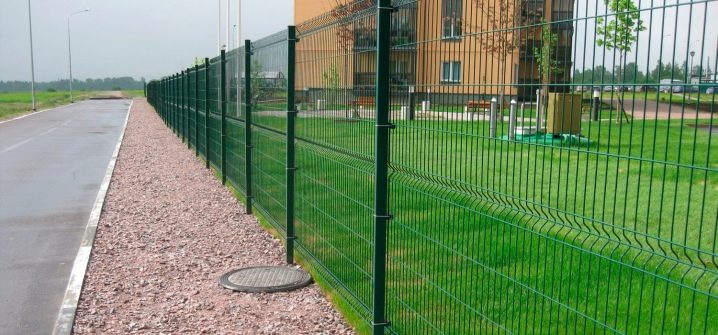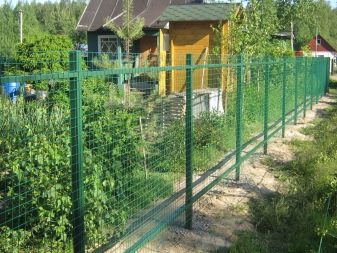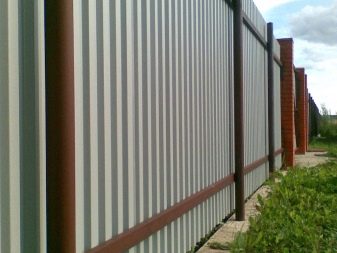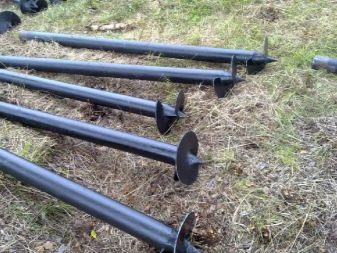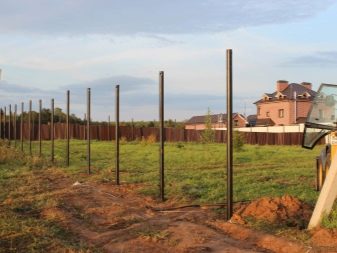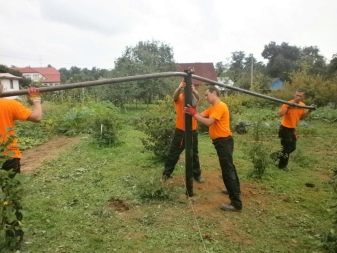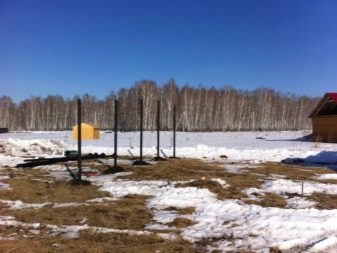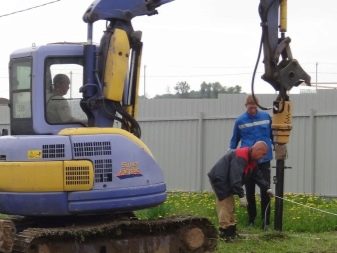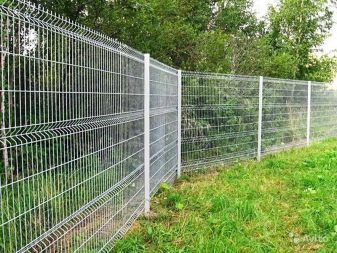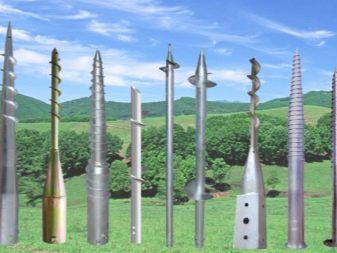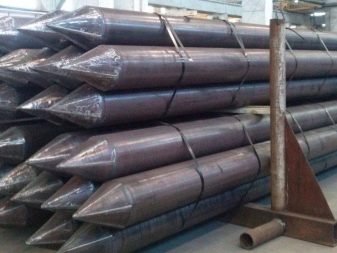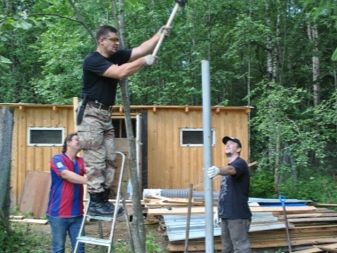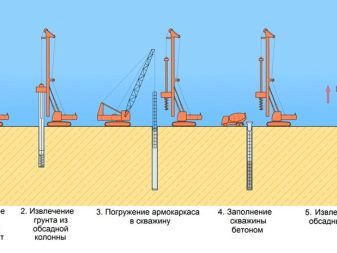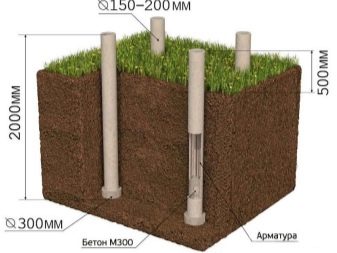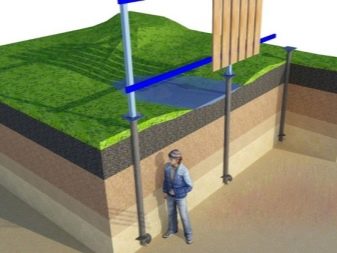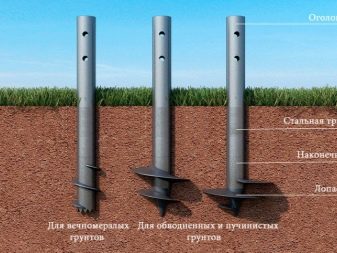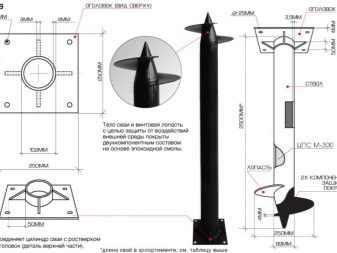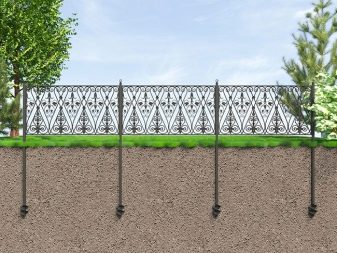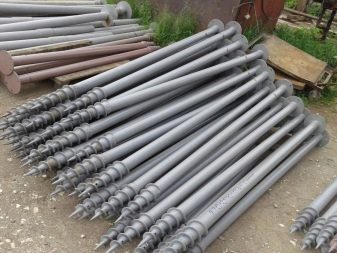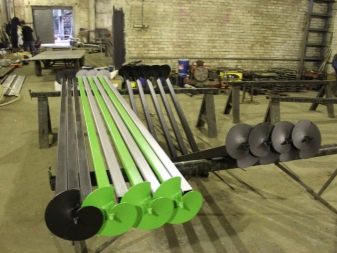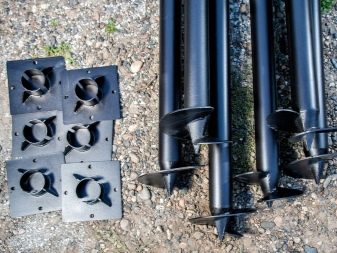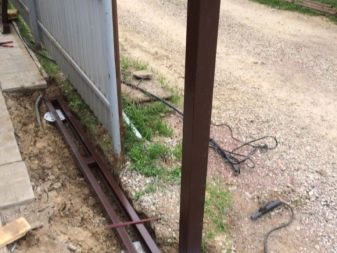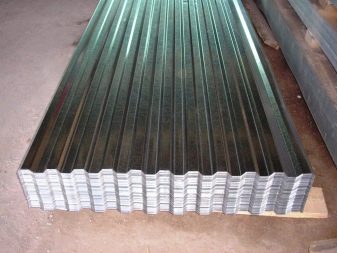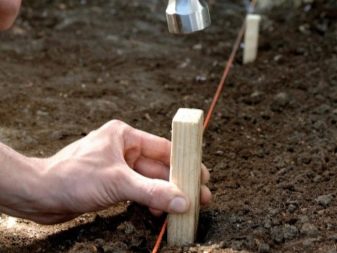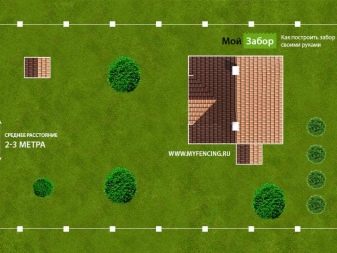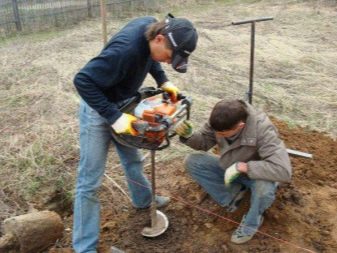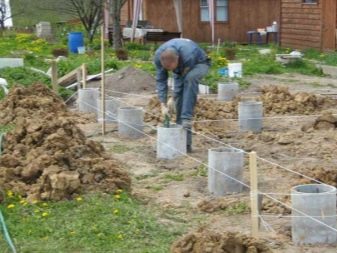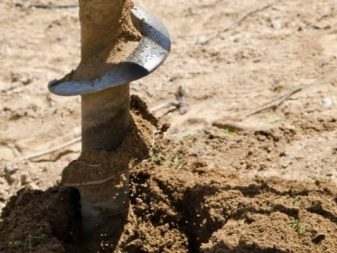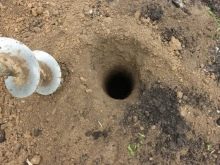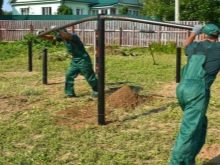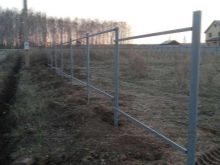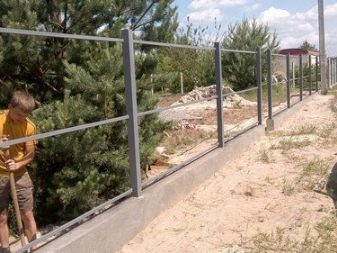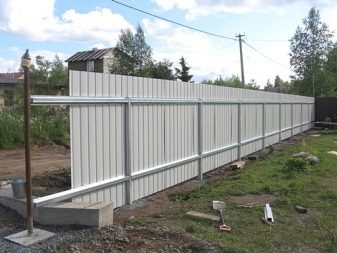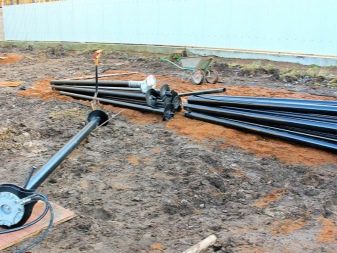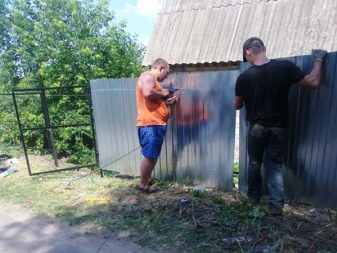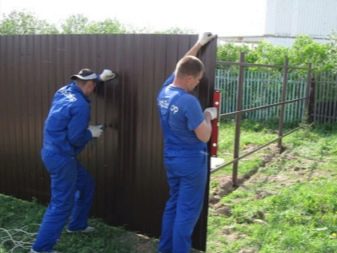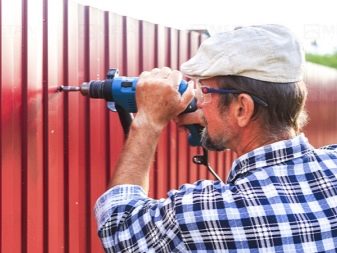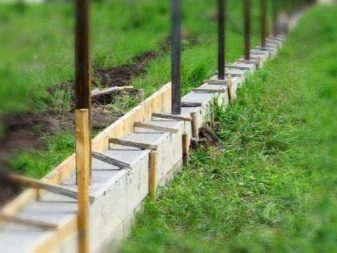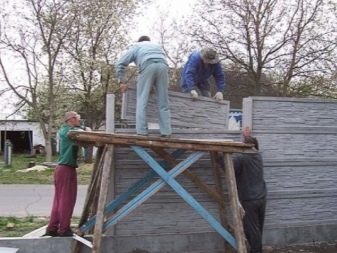How to make a fence on piles: technology and work order
To designate and protect their territory, the owners of private houses and cottages use fences. Also, these designs perform a decorative function. In cities, fences are made deaf, but in villages, on the contrary, picket fences are more common, which are installed so as not to obscure the ground.
Regardless of what material is chosen for the base, high-quality supports, such as screw or driven piles, are necessary to ensure the long life of the fence.
Features of the device
First you need to understand what are the piles. These are durable metal pipes, supplemented with threads and empty in the middle.Often, instead of carving, blades are used for more secure fixing in the ground.
A distinctive feature of piles is that they are easy to install. The technology and work order are clear, much can be done by hand. To fix the screw products they do not have to bury or pour concrete. Well-fixed piles are not afraid of additional loads and frost.
The fence on stilts has many advantages, which is why many make the choice in his favor. However, before starting work, you should familiarize yourself with all the features of such products, find out what equipment you may need, what are the installation principles.
Advantages and disadvantages
Quality piles, like any other material, have pros and cons.
First you need to familiarize yourself with their positive aspects.
- First of all, it is the possibility of installing such fences on heaving and marshy soils.
- When immersed pile soil layers are not mixed. This favorably distinguishes them from structures that are installed in previously dug trenches.
- When the blades enter the ground, they do not loosen it, but, on the contrary, compact it.
- Piles can be used more than once.
- Installation is carried out very quickly, since additional work (for example, on pouring concrete) is not required.
- Pile installation can be carried out anywhere, even on sloping or uneven surfaces.
- It is possible to install the fence on screw piles at any time of the year (even in frosty winter), in any weather and without special equipment. The help of specialists is not obligatory, everything can be done by hand.
- Screw piles have sufficient strength, they can withstand loads of up to several tons.
- This design can stand without repair for more than a hundred years.
There are not too many flaws in the piles, but they still exist.
- Often the installation of supports is uneven. In this case, the fence may skew.
- If you use specialized equipment, the installation of piles will be expensive. However, this minus is not so terrible, because most of the installation work can be done manually.
- There are restrictions regarding the installation of screw piles. Such a fence can not be put in rocky terrain. Stones can become an insurmountable obstacle to the cutting screw.Therefore, before starting work it is necessary to do test drilling.
Obviously, piles have more advantages than disadvantages, although the work should take into account all the nuances.
Selection and calculation of the load
Everyone who wants to build a house on his plot faces the problem of choosing a foundation for the fence. The most common among pile foundations are screw, driven and bored varieties. Each type has its own characteristics and advantages. To make the right choice, you need to consider them in detail.
Zabivny
These are ready-made reinforced concrete rods, which are intended for penetration into the soil. They are hanging and supporting. The latter rely on very dense soil layers only with the tip, while the former use the side surfaces. These products are two times cheaper than bored. They are durable, have a high bearing capacity.
It is also worth considering the large weight of the structures and the need to use special equipment.
Bored
This type is a monolithic structure, which consists of reinforced concrete. It is being built directly at the construction site.At the beginning with the help of special elements drilled holes. They put steel pipes in them. As a result of this, cylinders are inserted into the cylinders from the reinforcement and then poured with M300 concrete and compacted.
Such piles have a large bearing capacity. They are sufficiently resistant to corrosion, do not vibrate during installation, but at the same time they are expensive and have some restrictions on the length of the pile. In winter, work is stopped. It is possible to put a fence only after 28 days.
Screw
Such piles do not need to be submerged to the bearing layer. Forty to sixty centimeters below the freezing mark will suffice.
When choosing, consider the following characteristics of piles:
- crown tips are used for permafrost soils;
- for serious constructions it is necessary to use screws that have small multiple-blade blades;
- optimum protection for combined structures will be a corrosion-resistant coating, part of which is in the air, and some in the ground.
Load calculation
When building piles, it is recommended to consider certain parameters for loads. The pitch of the screw should be up to five centimeters, the blade - five millimeters thick.This will be enough for one turn. The wall thickness of the pipe should be from four millimeters, the diameter can vary from forty-five to seventy-six millimeters. In addition, such a pipe should be seamless.
The length of the pile can reach two meters. The tip must be cross-shaped, and the tube cut is done at forty-five degrees.
With a more complex, sometimes uneven terrain, it is better to twist short piles.
Material preparation and markup
To install the fence on stilts, you need certain materials. They must be of very high quality, because the durability and reliability of the structure will depend on it. Of particular importance is the appearance of the tip. It can be cast or welded. The first are considered longer-term, although they are not so often bought. This is because such parts are used for heavy structures.
It is also necessary to determine the length of the product itself. There is a large selection on the construction markets (from one meter to eleven). Particular attention should be paid to anti-corrosion coating. Also, when choosing a support, it is necessary to take into account the size of the sheets and the wind load.
Necessary materials
You will need screw piles, self-tapping guides for profiled fasteners, posts for gates and, of course, decking itself, the thickness of which should be about half a millimeter. After purchasing all the necessary materials you can start marking.
Markup
The marking should go along the perimeter of the entire future fence. To do this, around the perimeter of the patch stretch the cord. The bar is nailed to two pegs, having a length of sixty centimeters. It is convenient to adjust the cords on them.
Since the sections of the fences are usually flat, and the area can have a rather complicated contour, the length of the spans must be considered before work. All marks on the ground in those places where the piles will be screwed in can be painted with paint or lime mortar.
There is one feature of the installation of screw piles, which is worth knowing. It lies in the fact that installation work can be carried out not only with your own hands, but also with the help of drilling rigs. Such pillars can be installed at any time of the year, unlike works with concrete, which cease with the onset of cold weather.If there is a lot of snow on the site, then it should be removed immediately before installation.
If the winter has little snow, then you can immediately begin to drill preparatory wells and screw in the piles.
Pile frame installation
The installation technology of the pile framework may be different. Cheaper, of course, do the installation by hand. In this case, the piles are driven in with hammers, without excavation.
To install a pile frame made of reinforced concrete using a different method. In this case, the inventory pipes are first immersed in the ground and then removed (when the holes are already filled with concrete). It also makes a stamping of wells with a conical shape, into which the concrete mix is poured.
To install drill piles, for the beginning of doing wells in the ground. After that they are reinforced and poured with concrete.
For installation of screw piles installation work is carried out without welding. Steel structures are screwed into the ground, while using a screw thread. This method is interesting, so it is worth considering in more detail.
After completing the markings for screwing in the piles, grooves are made in the ground to accurately position them around the site.Priyamki, the depth of which reaches 40 centimeters, can be drilled with a tool. It will directly depend on the main holes that the heads of the piles should be so straightforward.
The piles themselves are not very deeply screwed into the ground, about one and a half meters. For this purpose, a lever is made of a sufficiently long pipe. It depends on how big it will be, and it will be so easy for a pile to enter the ground.
It is important from the outset to ensure that the support goes vertically, otherwise you will have to redo everything. In this case, a deviation of up to two centimeters is allowed, but only if no more than half a meter of pile is located at the top. The resulting frame is ground to protect against corrosion.
Mounting construction
When the frame is ready, it will be possible to begin the installation work on fastening material for the fence. The design can be any, for example, from a metal shtaketnik, from a professional flooring, from a brick, from concrete.
The main bearing guides must be welded to the outside of the piles. Additional pillars are attached to the piles through the gaskets so that their outer side is in the same plane as the main elements.If the span exceeds two meters, you need to connect them with inclined or vertical jumpers. The crossbars are built up by connecting pipes or butt corners.
Pipes with a diameter of 57 millimeters and a blade of 15 centimeters can be used for fencing of a metal fence or a wooden paling fence. For sections of profiled sheet, you can mount piles with a diameter of 76 millimeters and a blade of 20 centimeters.
After that, the fixing of the fence posts, to which the guides are attached, is necessary. They perform the function of strapping and fill the space with a professional sheet or other material. It is possible to connect the elements of the frame with ordinary bolts. For more reliable mounting special brackets are used, but you can do without them.
New sheets align with the previous ones and overlap by one wave. Each element is attached with one screw to the top guide and only then, when the sheet is aligned, fix it with a second screw. Professional sheets are attached to the frame through a wave, while both sheets need to be flashed where they join.
Where the sheets have been trimmed, it is necessary to cover them with bitumen mastic.
Useful tips
Installation of piles is complicated, so before installing the fence, you need to learn the advice of experts with experience in such works. If the installation is performed for the first time, it is better to build a foundation for the fence at a height of up to thirty centimeters from the ground. To do this, insert fence pillars into the pile foundation. This will greatly facilitate the installation process.
If the fence is constructed from 3D panels, it is better to install them on a wooden beam. Then they need to be fixed with wooden struts and check how carefully the work has been done on the level. Construction of such fences is possible without welding. If you use special fittings or flanges, you can install the pillars and fix the panels with simple bolts.
To learn how to make a fence on stilts correctly, see the next video.
